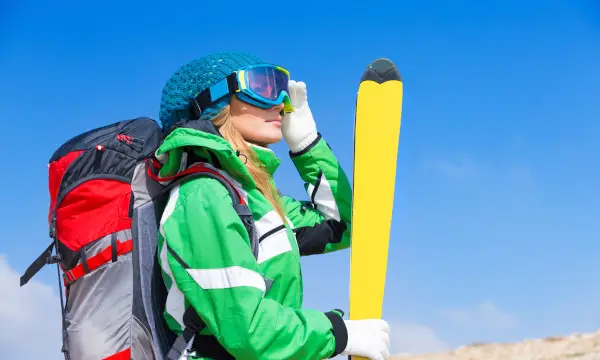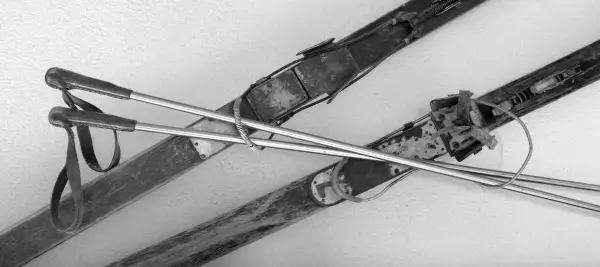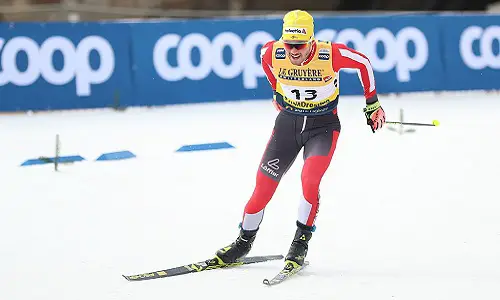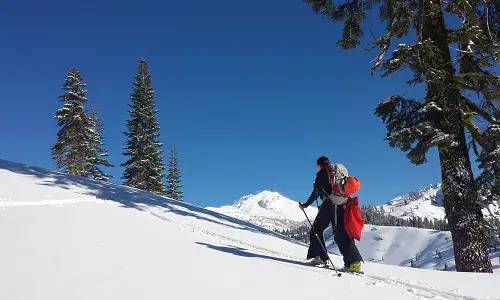Table of Contents
If you’re new to cross-country skiing and are confused about what size ski would suit you best, just read on further to learn what you should look out for.
Cross Country Ski Size Chart
It’s evident why the correct sizing of cross-country skis is crucial to your skiing experience. To make your decision easier, we highlighted the four major factors you have to look out for, as well as compiled the following cross-country ski size chart for both classic skiing and skate skiing, which should provide the ski length you are looking for at first glance.
Kids' Cross-Country Ski Sizing Chart | ||
Skier Height | Classic Skis Length | Skate Skis Length |
3'9" - 3'10" | 140 cm | 130 cm |
3'11" - 4'0" | 145 cm | 135 cm |
4'1" - 4'2" | 150 cm | 140 cm |
4'3" - 4'4" | 155 cm | 145 cm |
4'5" - 4'6" | 160 cm | 150 cm |
4'7" - 4'8" | 165 cm | 155 cm |
4'9" - 4'10" | 170 cm | 160 cm |
4'11" - 5'0" | 175 cm | 165 cm |
Cross-Country Ski Sizing Chart for Adults | |||
Skier Height | Skier Weight | Classic Skis Length | Skate Skis Length |
5'1" - 5'2" | 100-110 lbs | 180 cm | 170 cm |
5'3" - 5'4" | 110-120 lbs | 185 cm | 175 cm |
5'5" - 5'6" | 120-130 lbs | 190 cm | 180 cm |
5'7" - 5'8" | 130-150 lbs | 195 cm | 185 cm |
5'9" - 5'10" | 150-160 lbs | 200 cm | 190 cm |
5'11" - 6'0" | 160-180 lbs | 205 cm | 195 cm |
6'1" - 6'2" | 160-180 lbs | 205 cm | 195 cm |
6'3" - 6'4" | 180 lbs + | 210 cm | 195 cm |
Cross-Country Ski Sizing Guide
1. Skier’s Weight
Weight is highly essential in determining the size of cross-country skis. As opposed to alpine skiing, you have to be able to press the skis into the snow to have the necessary grip for moving forward.
For this reason, you are depending on your weight to be able to bend the ski camber. Naturally, this is also in relation with the ski’s stiffness which is also another factor you must take into account: the less you weight the less stiff skis you need.
If you weigh less than average, it is recommended to go for a shorter ski. Similarly, if you weigh more, we recommend opting for a longer ski.

2. Skier’s Height
Both height and weight are essential reference points. This is because skiers need to stay balanced while skiing and their height significantly impacts their balance.
The taller the skier is, the higher their center of gravity. Having longer skis will help them balance their body better. Therefore, they have a balanced center of gravity. Relatively, shorter people should gravitate towards shorter skis.
3. Skiing Style
As you know, cross-country skiing has two distinct styles. Classic cross-country skiing, also called diagonal stride requires 10-15 cm longer skis than skate skiing. But there’s still one more factor to consider.
4. Ability Level
Ability levels vary from person to person. You can be a beginner, intermediate, or pro cross-country skier, and your skills and abilities are crucial when it comes to choosing the perfect ski size.
This is because longer cross-country skis are challenging to work with and maneuver. They require a higher level of skill than that required for shorter skis.
So, if you are a beginner skier, and after considering your weight, height and style, you still have a choice between two sizes, you should choose the shorter cross-country skis.

Ski Sizing Tips
- Generally, when holding the skis upright and parallel to yourself, you want the tip of the ski to reach between your chin and the top of your head. A ski whose length goes up to your chin would be more suitable if you have a shorter height or less weight.
- Ski length that reaches the top of your head will be a better choice for tall people or those who weigh more.
- If you prefer to make shorter and sharper turns and ski between trees, then shorter skis would be optimal. However, you will have to sacrifice stability.
- Longer skis offer more stability and float in the snow. They have a larger turn radius as well. So, if you like rounder turns and prefer to ski in large and open areas, then long skis are what you want. Meanwhile, a skinnier ski will give you a better edge hold, especially in super firm conditions.
- Always take your skill level into perspective when choosing your skis. Skis made for beginners are softer with a narrow side cut and slim to medium waist. This makes them easier to turn and maneuver at slow speeds.
- Skis designed for experts are stiffer with an extended side cut. These skis also often feature a layer of carbon or metal to deliver a smoother and powerful ride. They are easier to turn, stable, and are more precise at higher speeds.


